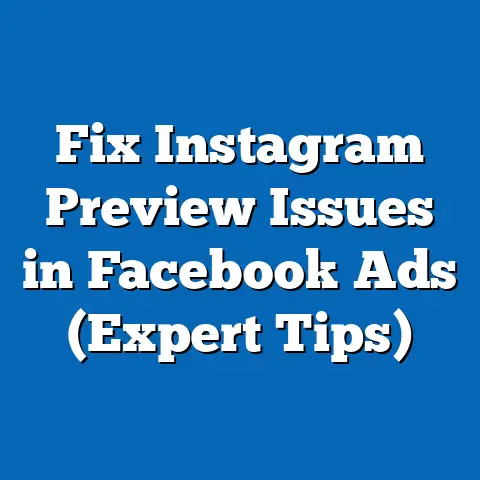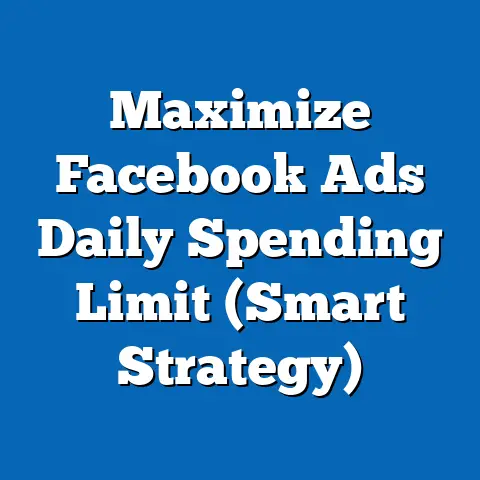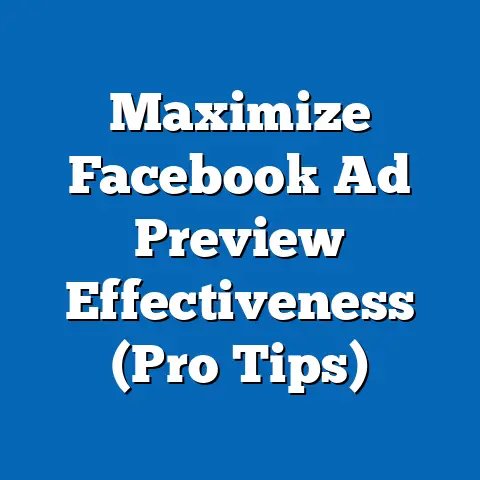Boost ROI with Mixpanel Facebook Ads (Strategic Insights)
The world of digital advertising is in constant flux. What worked yesterday might not work today. We’re bombarded with new platforms, algorithms, and strategies, making it harder than ever to cut through the noise and connect with our target audience effectively. In this dynamic landscape, the brands that thrive are those that embrace data-driven decision-making. And that’s where the magic of combining Mixpanel with Facebook Ads comes in.
Imagine having a superpower that allows you to see exactly how your customers are interacting with your ads and your product after they click. Imagine understanding not just how many people clicked, but what they did next. Did they sign up? Did they browse specific products? Did they abandon their cart? This level of granular insight is no longer a pipe dream; it’s the reality that Mixpanel brings to the table.
Understanding Mixpanel and Its Capabilities
Before we dive into the nitty-gritty of integration and optimization, let’s get a solid understanding of what Mixpanel is and what it can do for you. Think of Mixpanel as your super-powered event tracking and analytics platform. It’s not just about page views and bounce rates; it’s about understanding individual user actions within your product or website.
What is Mixpanel?
Mixpanel is a product analytics platform designed to help businesses understand how users interact with their digital products. Unlike traditional web analytics tools, which focus on aggregate data like page views and sessions, Mixpanel tracks individual user actions, or “events.” This allows you to gain a much deeper understanding of user behavior and identify patterns that drive engagement, retention, and conversion.
For example, instead of just knowing that 100 people visited your pricing page, Mixpanel can tell you:
- How many of those 100 people clicked on the “Sign Up” button.
- How many completed the signup process.
- Which features they used after signing up.
- How long they used each feature.
- When they stopped using the product.
This granular level of detail is invaluable for understanding the user journey and identifying areas for improvement. I remember when I first started using Mixpanel, I was blown away by the level of detail I could access. It felt like I was finally able to “see” what my users were actually doing, rather than just guessing based on aggregate data.
Key Features
Mixpanel boasts a range of powerful features that make it a must-have tool for any data-driven marketer. Here are a few of the most important ones:
- User Segmentation: Mixpanel allows you to segment your users based on a wide range of criteria, including demographics, behavior, and technology. This enables you to create highly targeted audiences for your Facebook Ads campaigns. For example, you could create a segment of users who have visited your pricing page but haven’t signed up, and then target them with a special offer in your ads.
- Funnel Analysis: Funnel analysis allows you to track the steps users take to complete a specific goal, such as signing up for a free trial or making a purchase. By identifying drop-off points in the funnel, you can pinpoint areas where users are getting stuck and optimize your product or website to improve conversion rates. I once used funnel analysis to discover that a significant number of users were abandoning our signup process because of a confusing form field. After simplifying the form, we saw a 20% increase in signup conversions.
- Retention Tracking: Retention tracking helps you understand how well you’re retaining your users over time. By tracking metrics like daily active users (DAU) and monthly active users (MAU), you can identify trends and patterns that indicate whether your product is providing value to your users. Mixpanel also allows you to segment your users based on retention rates, so you can identify your most loyal customers and understand what makes them stick around.
- A/B Testing Capabilities: Mixpanel’s A/B testing capabilities allow you to test different versions of your product or website to see which performs best. You can use A/B testing to optimize everything from your ad copy to your landing page design. Mixpanel’s A/B testing features integrate seamlessly with its other analytics tools, so you can track the impact of your tests on key metrics like conversion rates and retention rates.
Comparison with Other Analytics Tools
While Google Analytics is a powerful and widely used web analytics tool, it has limitations when it comes to understanding user behavior within a product. Google Analytics primarily focuses on website traffic and page views, while Mixpanel focuses on individual user actions. This makes Mixpanel a better choice for businesses that want to understand how users are interacting with their product and identify areas for improvement.
Here’s a quick comparison:
| Feature | Google Analytics | Mixpanel |
|---|---|---|
| Focus | Website traffic and page views | Individual user actions |
| Data Granularity | Aggregate data | Granular, user-level data |
| Event Tracking | Limited | Robust and flexible |
| User Segmentation | Basic | Advanced and customizable |
| Funnel Analysis | Basic | Powerful and intuitive |
| Retention Tracking | Limited | Comprehensive |
| Pricing | Free (with paid upgrades) | Paid (based on monthly tracked users) |
| Feature | Google Analytics | Mixpanel |
|---|---|---|
| Focus | Website traffic and page views | Individual user actions |
| Data Granularity | Aggregate data | Granular, user-level data |
| Event Tracking | Limited | Robust and flexible |
| User Segmentation | Basic | Advanced and customizable |
| Funnel Analysis | Basic | Powerful and intuitive |
| Retention Tracking | Limited | Comprehensive |
| Pricing | Free (with paid upgrades) | Paid (based on monthly tracked users) |
While Google Analytics is a great tool for understanding overall website traffic, Mixpanel provides the depth of insight needed to truly understand user behavior and optimize your product for maximum engagement and retention. For Facebook Ads, this means a more targeted and effective approach to reaching the right audience with the right message.
Key Takeaway: Mixpanel is a powerful product analytics platform that tracks individual user actions, providing valuable insights into user behavior. Its key features include user segmentation, funnel analysis, retention tracking, and A/B testing capabilities. Compared to Google Analytics, Mixpanel offers a more granular and user-centric approach to analytics, making it a valuable tool for optimizing Facebook Ads campaigns.
The Importance of Data-Driven Marketing
In today’s competitive landscape, guesswork is no longer an option. Data-driven marketing is the only way to ensure that your marketing efforts are effective and efficient. Let’s break down why this approach is so crucial.
Defining Data-Driven Marketing
Data-driven marketing is the process of making marketing decisions based on data analysis rather than intuition or gut feeling. It involves collecting, analyzing, and interpreting data from a variety of sources to understand customer behavior, identify trends, and optimize marketing campaigns.
This approach allows you to:
- Target the right audience: By understanding your customer demographics, interests, and behaviors, you can create highly targeted ad campaigns that reach the people most likely to convert.
- Personalize your messaging: Data-driven marketing allows you to tailor your messaging to individual customers based on their past interactions with your brand.
- Optimize your campaigns in real-time: By tracking key performance indicators (KPIs), you can identify areas where your campaigns are underperforming and make adjustments to improve results.
- Measure your ROI: Data-driven marketing allows you to track the return on investment (ROI) of your marketing efforts and identify the most effective channels and strategies.
Benefits of Data-Driven Decisions
The benefits of data-driven marketing are numerous and far-reaching. Here are a few of the most significant advantages:
- Improved Targeting and Personalization: One of the biggest benefits of data-driven marketing is the ability to improve targeting and personalization. By understanding your customer demographics, interests, and behaviors, you can create highly targeted ad campaigns that reach the people most likely to convert. You can also personalize your messaging to individual customers based on their past interactions with your brand, making your ads more relevant and engaging.
- Enhanced Customer Insights: Data-driven marketing provides valuable insights into customer behavior. By tracking how users interact with your product or website, you can identify patterns and trends that can inform your marketing strategy. For example, you might discover that users who visit a particular page on your website are more likely to convert, or that users who use a particular feature of your product are more likely to retain.
- Greater ROI through Optimized Ad Spend: Data-driven marketing allows you to optimize your ad spend for maximum ROI. By tracking key performance indicators (KPIs) like click-through rate (CTR), conversion rate, and cost per acquisition (CPA), you can identify areas where your campaigns are underperforming and make adjustments to improve results. You can also use data to identify the most effective channels and strategies, and allocate your budget accordingly.
Case Studies
Let’s look at a couple of real-world examples of companies that have successfully implemented data-driven marketing strategies using Mixpanel and Facebook Ads:
- Example 1: Subscription Box Company: A subscription box company used Mixpanel to track user behavior after they signed up for a free trial. They discovered that users who completed a specific onboarding flow were significantly more likely to convert to a paid subscription. They then used this insight to create a Facebook Ads campaign targeting users who hadn’t completed the onboarding flow, encouraging them to do so. This resulted in a 15% increase in paid subscriptions.
- Example 2: E-commerce Store: An e-commerce store used Mixpanel to track user behavior on their website. They discovered that users who viewed a particular product category were more likely to make a purchase. They then used this insight to create a Facebook Ads campaign targeting users who had viewed that product category but hadn’t made a purchase, showing them ads for similar products. This resulted in a 10% increase in sales.
These are just two examples of how data-driven marketing can be used to improve ROI. By leveraging the power of Mixpanel and Facebook Ads, you can gain valuable insights into customer behavior and optimize your campaigns for maximum results.
Key Takeaway: Data-driven marketing is essential for modern businesses. It involves making marketing decisions based on data analysis rather than intuition. The benefits of data-driven marketing include improved targeting and personalization, enhanced customer insights, and greater ROI through optimized ad spend.
Integrating Mixpanel with Facebook Ads
Now that we understand the power of Mixpanel and the importance of data-driven marketing, let’s dive into the practical steps of integrating Mixpanel with Facebook Ads. This integration will allow you to track user behavior after they click on your ads, providing valuable insights for optimizing your campaigns.
Step-by-Step Integration Guide
Here’s a detailed, step-by-step guide on how to integrate Mixpanel with Facebook Ads:
- Set up Mixpanel for Facebook Ads tracking:
- If you don’t already have a Mixpanel account, sign up for one.
- Create a new project in Mixpanel for your Facebook Ads campaigns.
- Install the Mixpanel JavaScript library on your website. You can find the installation instructions in the Mixpanel documentation.
-
Create and implement custom events:
- Identify the key actions you want to track on your website, such as signing up for a free trial, making a purchase, or visiting a particular page.
- Create custom events in Mixpanel for each of these actions.
- Implement the custom events on your website using the Mixpanel JavaScript library. For example, to track when a user signs up for a free trial, you would add the following code to the signup confirmation page:
javascript mixpanel.track('Signed Up for Free Trial');3. Link Facebook Ads account to Mixpanel: * In your Facebook Ads Manager, go to the “Pixels” tab. * Click on “Set Up Pixel” and choose “Manually Add Pixel Code to Website”. * Copy the pixel code and paste it into the<head>section of your website. * In Mixpanel, go to “Integrations” and select “Facebook Ads”. * Follow the instructions to connect your Facebook Ads account to Mixpanel.
- If you don’t already have a Mixpanel account, sign up for one.
- Create a new project in Mixpanel for your Facebook Ads campaigns.
- Install the Mixpanel JavaScript library on your website. You can find the installation instructions in the Mixpanel documentation.
Create and implement custom events:
- Identify the key actions you want to track on your website, such as signing up for a free trial, making a purchase, or visiting a particular page.
- Create custom events in Mixpanel for each of these actions.
- Implement the custom events on your website using the Mixpanel JavaScript library. For example, to track when a user signs up for a free trial, you would add the following code to the signup confirmation page:
javascript
mixpanel.track('Signed Up for Free Trial');
3. Link Facebook Ads account to Mixpanel:
* In your Facebook Ads Manager, go to the “Pixels” tab. * Click on “Set Up Pixel” and choose “Manually Add Pixel Code to Website”. * Copy the pixel code and paste it into the <head> section of your website. * In Mixpanel, go to “Integrations” and select “Facebook Ads”. * Follow the instructions to connect your Facebook Ads account to Mixpanel.
Tracking User Engagement
Once you’ve integrated Mixpanel with Facebook Ads, you can start tracking user engagement. Here’s how to set up user engagement tracking through Mixpanel:
- Define your key engagement metrics: Identify the metrics that are most important for your business, such as daily active users (DAU), monthly active users (MAU), time spent on site, and number of pages visited.
- Create custom events for each metric: Create custom events in Mixpanel for each of your key engagement metrics. For example, to track daily active users, you would create an event that is triggered when a user visits your website each day.
- Analyze your engagement data: Use Mixpanel’s reports and dashboards to analyze your engagement data. Look for trends and patterns that can inform your marketing strategy. For example, you might discover that users who visit a particular page on your website are more likely to become daily active users.
Utilizing UTM Parameters
UTM parameters are essential for tracking the effectiveness of your Facebook Ads campaigns in Mixpanel. UTM parameters are tags that you add to your ad URLs that allow you to track the source, medium, and campaign that generated a particular visit to your website.
Here’s how to use UTM parameters:
-
Add UTM parameters to your ad URLs: When creating your Facebook Ads, add UTM parameters to your ad URLs to track the source, medium, and campaign. For example, you might use the following UTM parameters:
utm_source=facebookutm_medium=cpcutm_campaign=summer_sale- Analyze your UTM data in Mixpanel: Use Mixpanel’s reports and dashboards to analyze your UTM data. This will allow you to see which Facebook Ads campaigns are generating the most traffic and conversions.
Add UTM parameters to your ad URLs: When creating your Facebook Ads, add UTM parameters to your ad URLs to track the source, medium, and campaign. For example, you might use the following UTM parameters:
utm_source=facebookutm_medium=cpcutm_campaign=summer_sale- Analyze your UTM data in Mixpanel: Use Mixpanel’s reports and dashboards to analyze your UTM data. This will allow you to see which Facebook Ads campaigns are generating the most traffic and conversions.
By using UTM parameters, you can gain valuable insights into the effectiveness of your Facebook Ads campaigns and optimize your campaigns for maximum ROI.
Key Takeaway: Integrating Mixpanel with Facebook Ads allows you to track user behavior after they click on your ads, providing valuable insights for optimizing your campaigns. The integration process involves setting up Mixpanel for Facebook Ads tracking, creating and implementing custom events, and linking your Facebook Ads account to Mixpanel. Utilize UTM parameters to track the effectiveness of your Facebook Ads campaigns in Mixpanel.
Analyzing Data for Enhanced ROI
The real magic happens when you start analyzing the data collected through Mixpanel and using those insights to optimize your Facebook Ads campaigns. Let’s explore how to interpret this data and turn it into actionable strategies.
Interpreting Mixpanel Data
Interpreting Mixpanel data can seem daunting at first, but it becomes much easier once you understand the key metrics and how to use Mixpanel’s reports and dashboards. Here are a few tips for interpreting Mixpanel data:
- Start with the big picture: Begin by looking at your overall engagement metrics, such as daily active users (DAU), monthly active users (MAU), and retention rates. This will give you a sense of how your product is performing overall.
- Drill down into specific segments: Once you have a sense of the big picture, start drilling down into specific segments of users. For example, you might want to look at the engagement metrics for users who signed up for a free trial versus users who purchased a paid subscription.
- Look for trends and patterns: As you analyze your data, look for trends and patterns that can inform your marketing strategy. For example, you might discover that users who visit a particular page on your website are more likely to convert, or that users who use a particular feature of your product are more likely to retain.
- Use Mixpanel’s reports and dashboards: Mixpanel offers a variety of reports and dashboards that can help you analyze your data. Take the time to explore these features and learn how to use them effectively.
Key Metrics to Monitor
Here are some key performance indicators (KPIs) that marketers should focus on when analyzing Mixpanel data in relation to Facebook Ads campaigns:
- Click-Through Rate (CTR): CTR measures the percentage of people who see your ad and click on it. A high CTR indicates that your ad is relevant and engaging to your target audience.
- Conversion Rate: Conversion rate measures the percentage of people who click on your ad and then complete a desired action, such as signing up for a free trial or making a purchase. A high conversion rate indicates that your landing page is effective and that your product is meeting the needs of your target audience.
- Cost Per Acquisition (CPA): CPA measures the cost of acquiring a new customer through your Facebook Ads campaigns. A low CPA indicates that your campaigns are efficient and that you are getting a good return on your investment.
- Lifetime Value (LTV): LTV measures the total revenue you can expect to generate from a customer over their lifetime. A high LTV indicates that your customers are loyal and that your product is providing long-term value.
Using Insights to Optimize Campaigns
Once you’ve identified your key metrics, you can use Mixpanel data insights to make strategic adjustments to your Facebook Ads campaigns for improved performance. Here are a few examples:
- If your CTR is low: Try experimenting with different ad copy, images, and targeting options to see what resonates best with your target audience.
- If your conversion rate is low: Optimize your landing page to make it more user-friendly and persuasive. Ensure that your product is meeting the needs of your target audience and that you are offering a compelling value proposition.
- If your CPA is high: Try reducing your ad spend, targeting a more specific audience, or optimizing your ad creative to improve your CTR and conversion rate.
- If your LTV is low: Focus on improving customer retention and loyalty. Offer excellent customer service, provide valuable content, and create a community around your product.
By continuously monitoring your KPIs and using Mixpanel data insights to optimize your campaigns, you can significantly improve your ROI and achieve your marketing goals.
Key Takeaway: Analyzing Mixpanel data is essential for optimizing your Facebook Ads campaigns. Key metrics to monitor include CTR, conversion rate, CPA, and LTV. Use Mixpanel data insights to make strategic adjustments to your campaigns for improved performance.
Real-World Applications and Strategies
Let’s bring it all together with some real-world examples and innovative strategies for using Mixpanel insights to inform your Facebook Ads campaigns.
Success Stories
Here are a few examples of businesses that have successfully leveraged Mixpanel with Facebook Ads to boost ROI:
- Online Education Platform: An online education platform used Mixpanel to track user behavior after they signed up for a free course. They discovered that users who completed the first lesson were significantly more likely to purchase a paid course. They then used this insight to create a Facebook Ads campaign targeting users who hadn’t completed the first lesson, encouraging them to do so. This resulted in a 20% increase in paid course purchases.
- Mobile Gaming Company: A mobile gaming company used Mixpanel to track user behavior within their game. They discovered that users who completed a particular tutorial were more likely to retain and make in-app purchases. They then used this insight to create a Facebook Ads campaign targeting new users, encouraging them to complete the tutorial. This resulted in a 15% increase in user retention and a 10% increase in in-app purchases.
- SaaS Company: A SaaS company used Mixpanel to track user behavior after they signed up for a free trial. They discovered that users who used a particular feature of their product were more likely to convert to a paid subscription. They then used this insight to create a Facebook Ads campaign targeting users who hadn’t used that feature, highlighting its benefits and encouraging them to try it out. This resulted in a 25% increase in paid subscriptions.
These examples demonstrate the power of using Mixpanel insights to inform your Facebook Ads campaigns. By understanding how users are interacting with your product or website, you can create highly targeted and effective campaigns that drive results.
Innovative Strategies
Here are a few innovative strategies for using Mixpanel insights to inform your Facebook Ads campaigns:
- Retargeting Based on User Behavior: Retarget users who have taken specific actions on your website or within your product. For example, you could retarget users who have visited your pricing page but haven’t signed up, showing them a special offer or a case study.
- Creating Lookalike Audiences from High-Value Customers: Use Mixpanel to identify your high-value customers (e.g., those with a high LTV). Then, create a lookalike audience in Facebook Ads based on these customers. This will allow you to target new users who are similar to your most valuable customers.
- Dynamic Ad Creatives Based on User Preferences: Use Mixpanel to track user preferences and interests. Then, create dynamic ad creatives that are tailored to individual users based on their preferences. For example, if a user has shown interest in a particular product category, show them ads for products in that category.
By implementing these innovative strategies, you can take your Facebook Ads campaigns to the next level and achieve even greater results.
Key Takeaway: Real-world applications and innovative strategies demonstrate the power of leveraging Mixpanel with Facebook Ads to boost ROI. Use Mixpanel insights to inform your Facebook Ads campaigns, retarget users based on behavior, create lookalike audiences from high-value customers, and create dynamic ad creatives based on user preferences.
Conclusion
We’ve covered a lot of ground in this article, from understanding the power of Mixpanel to implementing innovative strategies for optimizing your Facebook Ads campaigns. The key takeaway is that data-driven marketing is no longer a luxury; it’s a necessity for success in today’s competitive landscape.
By integrating Mixpanel with Facebook Ads, you can unlock unparalleled insights into customer behavior, optimize your ad campaigns with laser precision, and achieve a game-changing boost in your return on investment (ROI). Remember to:
- Set up Mixpanel for Facebook Ads tracking.
- Create and implement custom events.
- Link your Facebook Ads account to Mixpanel.
- Utilize UTM parameters to track the effectiveness of your campaigns.
- Analyze your data and make strategic adjustments to your campaigns.
- Implement innovative strategies like retargeting based on user behavior and creating lookalike audiences from high-value customers.
I encourage you to adopt a data-driven approach to your Facebook Ads strategies using Mixpanel. It’s not just about knowing how many people clicked on your ad; it’s about understanding what they did next and using that information to optimize your campaigns for maximum impact. This competitive edge can be the difference between success and failure in the ever-evolving world of digital advertising. So, take the leap, embrace the power of data, and watch your ROI soar!






